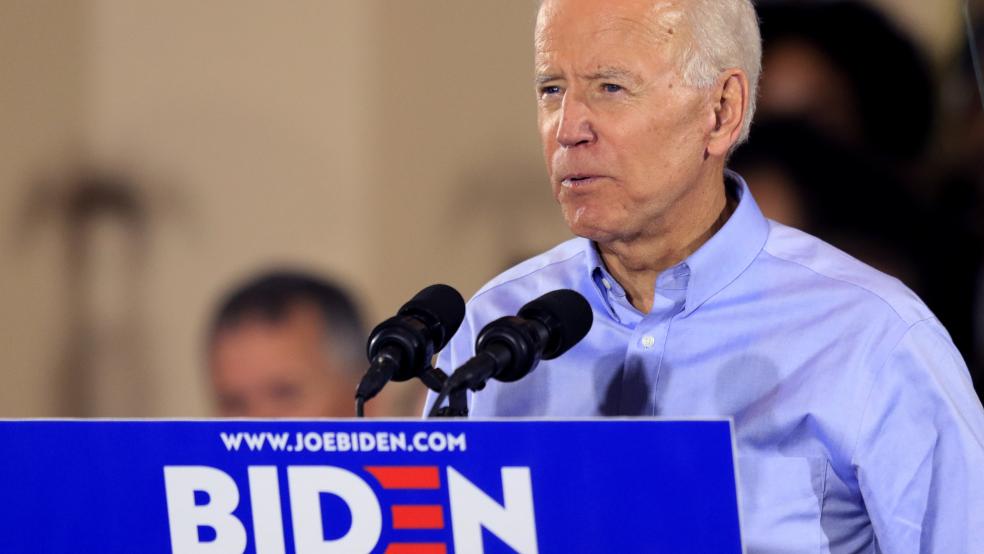Joe Biden rolled out a plan Wednesday to raise $3.2 trillion in additional taxes over 10 years, with the wealthy and corporations paying more to cover the cost of spending proposals on health care, climate, infrastructure and education.
Biden’s plan would require companies with U.S. net income of more than $100 million to pay a minimum tax rate of 15%. That measure, called a “minimum book tax,” would raise about $400 billion over a decade. It would hit about 300 companies, including Amazon, Netflix and others that have been criticized for paying no federal income tax in recent years. Another proposal would double the minimum tax rate on foreign income of U.S.-based companies to 21%, raising $340 billion.
His plan also calls for $200 billion in sanctions on countries such as Ireland, the Cayman Islands and Bermuda that “facilitate illegal corporate tax avoidance.”
Biden has previously called for raising the corporate tax rate from 21% to 28%, below the 35% rate that had been in place prior to the 2017 Republican tax law and the same level President Obama had proposed. He has also said he would restore the top individual income tax rate of 39.6%, up from the current 37%. And he would raise $800 billion from new capital gains taxes and proposes to eliminate tax breaks and loopholes, including what’s known as “stepped-up basis,” a provision that currently allows individuals to pass on property that has appreciated in value without the gains facing taxation.
Positioning himself as a fiscal moderate
Biden is looking “to cast himself as the fiscal moderate in the Democratic presidential primary amid pressure from his liberal rivals,” writes The Washington Post’s Jeff Stein. His plan stands in sharp contrast to proposals from Sens. Elizabeth Warren and Bernie Sanders, both of whom have called for returning the corporate tax rate to 35% and new taxes totaling more than $20 trillion over 10 years, according to Stein.
Biden has rejected the idea of a wealth tax, which both Warren and Sanders support, and he opted against calling for a financial transaction tax, which some of his campaign advisers had reportedly considered.
“Biden has proposed a $1.7 trillion climate and infrastructure plan, a $750 billion health care plan and a $750 billion higher education plan,” Jennifer Epstein writes at Bloomberg News. “That $3.2 trillion in spending over 10 years is far less than other Democrats have proposed spending on health care alone. Warren’s campaign estimates that her health care plan would cost $20.5 trillion over a decade, her climate plan would cost $3 trillion and other proposals trillions more.”
Biden’s proposal also contrasts with President Trump’s deficit-raising tax cuts and promises to pursue additional cuts in a second term.
“The vice president does think it’s very important to be clear with the American people regarding how you’re going to pay for things in order to demonstrate they can actually get it done,” Biden policy director Stef Feldman told Bloomberg’s Epstein, who first reported the plan.
That approach may win Biden flak from both the right and the left. Brian Riedl, a tax expert at the libertarian-leaning Manhattan Institute think tank, told The Washington Post that the former vice president’s plan, while more acceptable to Republicans than those from Warren and Sanders, would still make corporate taxes in the U.S. the highest among countries in the OECD after state and local taxes are factored in.
On the other hand, Robert C. Hockett, a professor at Cornell University who has reportedly advised Warren, Sanders and Rep. Alexandria Ocasio-Cortez, described Biden’s proposal as exceedingly modest compared to those of his rivals. “Biden continues to plan the least ambitious federal program of the top-tier candidates,” Hockett told the Post. “It’s kind of a drop in the bucket given the long-term problems in the economy. It’s small potatoes for a federal plan.”





